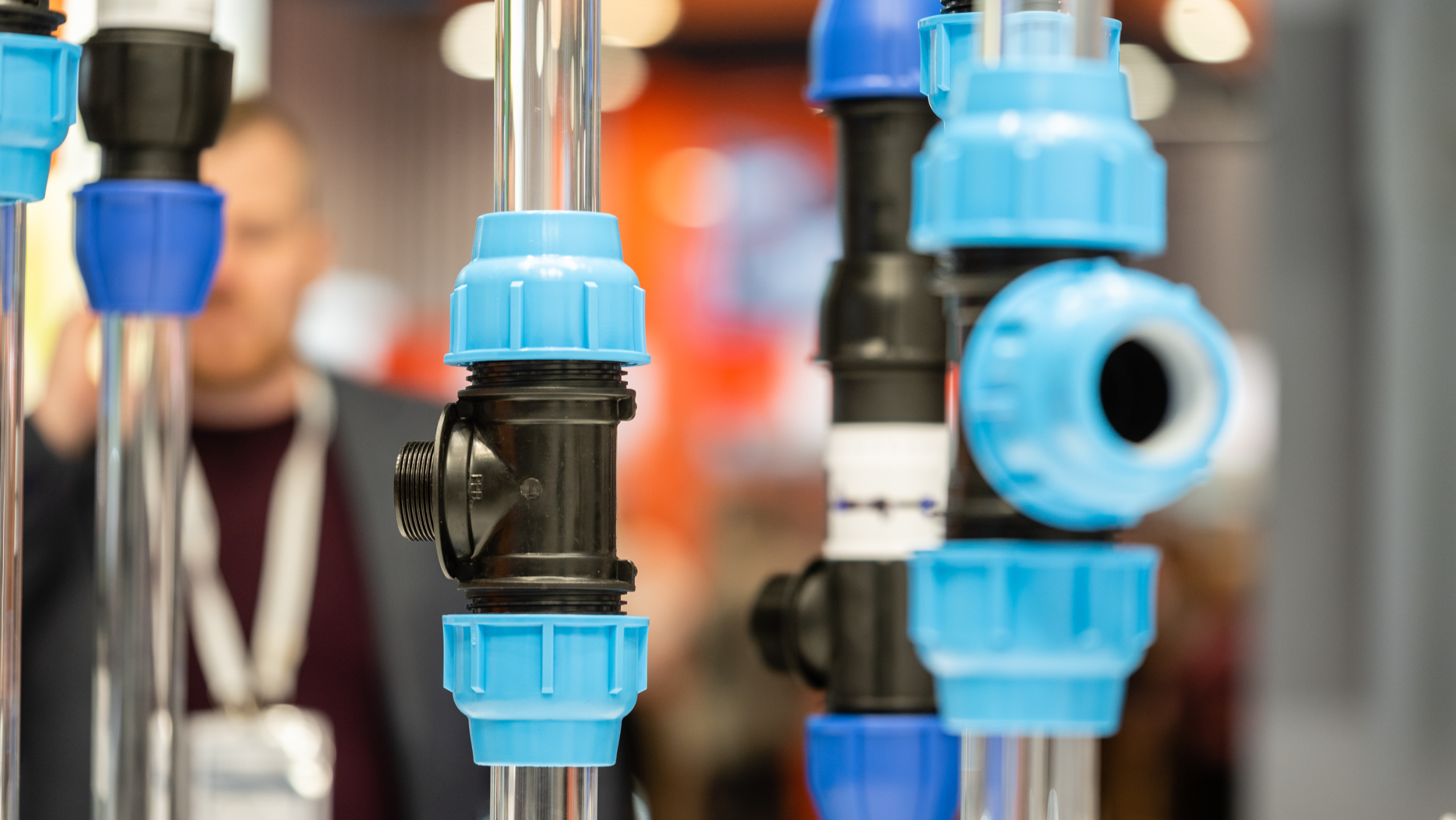Innovations for the HVAC sector

Air-conditioning, refrigeration and ventilation units are the mainstay of sustainable buildings and HVAC systems and components are evolving in the direction of increased energy efficiency, improved air quality and optimum user comfort and convenience. At the ISH trade fair, visitors can discover advances designed to optimise a building's indoor climate and carbon footprint.
Air transportation: efficiency and noise reduction
Thanks to innovations in the field of fan and housing aerodynamics, modern ventilation units are quieter and more energy efficient than ever before:
- By integrating variable frequency drives (VFDs), modern fans can adapt dynamically to demand, thus minimising energy consumption and noise levels.
- Thanks to asynchronous motors, EC fans are not only more energy-efficient but also quieter.
- Optimised fan-blade geometries minimise turbulence to ensure low levels of noise and economical air flow.
- Flow-optimised housings reduce both pressure losses and internal turbulence thereby improving the overall efficiency of the system.
Air distribution: precision and comfort
Precise air-distribution control is crucial for the comfort and efficiency of ventilation systems:
- Sensor-controlled ventilation grilles react to ambient conditions in real time and direct the air flow to prevent draughts, which contributes to a more pleasant room climate – without the need for further adjustments.
- Modern diffusers mix the incoming air perfectly with the room air, ensuring even distribution, a consistent temperature and high air quality – also in large rooms.
Air filtration: innovations for improved air quality
People are becoming increasingly sensitive to airborne microorganisms and pollutants, which makes air filtration even more important, to ensure a high standard of hygiene and indoor air quality:
- Combining HEPA filters with electrostatic filters and UV-C technology permits a multi-stage filtration process capable of removing even the finest particles, micro-organisms and gaseous pollutants.
- Self-cleaning mechanisms extend the service life of filter systems and reduce their maintenance costs.
- System reliability is enhanced when such combinations are paired with IoT-enabled sensors that monitor the status of the filters in real time.
Air conditioning: the trend is towards integrated systems
Modern air-conditioning systems integrate several functions in a single device:
- Inverter-controlled compressors adjust their output continuously according to demand, thereby optimising energy efficiency and system service life.
- Multi-stage heat exchangers in air-conditioning systems enable precise temperature control and optimum heat recovery.
- Adiabatic cooling systems use evaporative cooling to regulate the temperature, which significantly reduces energy consumption in comparison with mechanical cooling systems.
Heat recovery: innovative technologies for maximum efficiency
Heat recovery is key to resource-efficient HVAC systems:
- Rotary and plate heat exchangers are capable of extremely high recovery rates.
- Heat exchangers with a nano-coating not only improve heat transfer but also reduce the cleaning effort.
- Hybrid systems combine heat recovery with heat pumps to enable efficient energy recovery even at low outdoor temperatures.
Refrigerant circuit: environmental friendliness and efficiency
The ongoing development of refrigerants and compressors is focussed on reducing the global warming potential (GWP):
- CO₂, ammonia, propane and other natural refrigerants are finding their way into cooling systems as they combine a lower GWP with a high level of efficiency.
- The combination of different refrigeration technologies in a hybrid system ensures greater flexibility to cope with different operating conditions.
Sensors and control technology: intelligence and networking
Sensor technology and artificial intelligence are playing an increasingly important role in optimising the control of HVAC systems:
- IoT-enabled sensors monitor parameters such as temperature, humidity and CO₂ content continuously as well as optimising the operation of the HVAC system in real time.
- Artificial intelligence makes it possible to analyse complex datasets and dynamically adapt HVAC-system operating parameters.
- 5G and the use of edge computing enable HVAC systems to be integrated even more seamlessly into smart home networks.
Integration into building-management systems
The integration of HVAC systems into central building-management systems (BMS) and smart-home solutions facilitates comprehensive control and optimisation:
- Open communication protocols such as BACnet or ModBus permit the seamless integration of HVAC systems into BMS.
- The integration of HVAC systems into Home Energy Management Systems (HEMS) improves energy consumption and the indoor climate of the entire household.
The integration of modern components and digitalisation is set to make air conditioning, refrigeration and ventilation units smarter, more flexible and more sustainable. ISH 2025 will provide a wealth of inspiration for breathing fresh air into HVAC systems.
